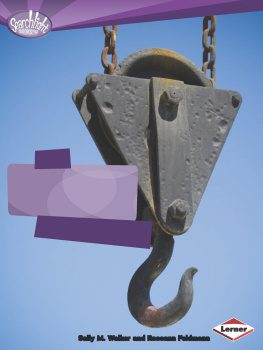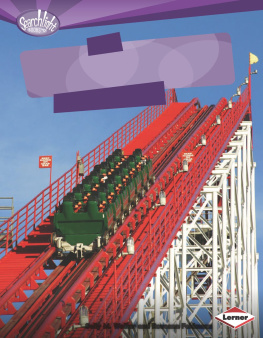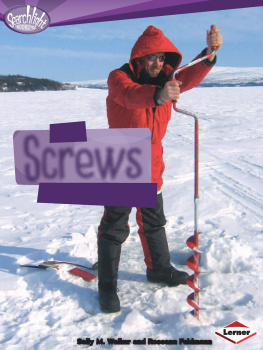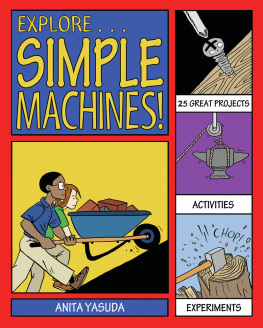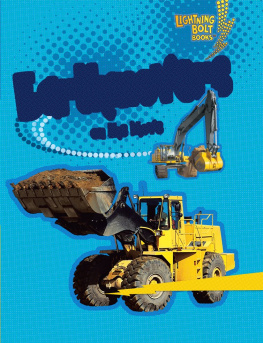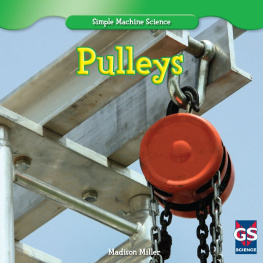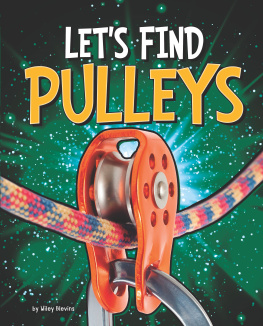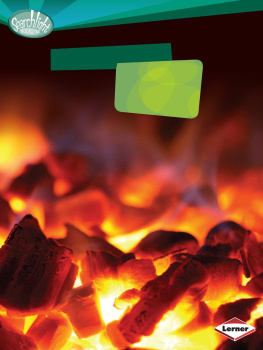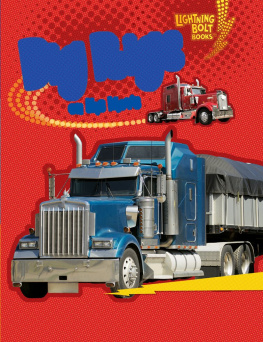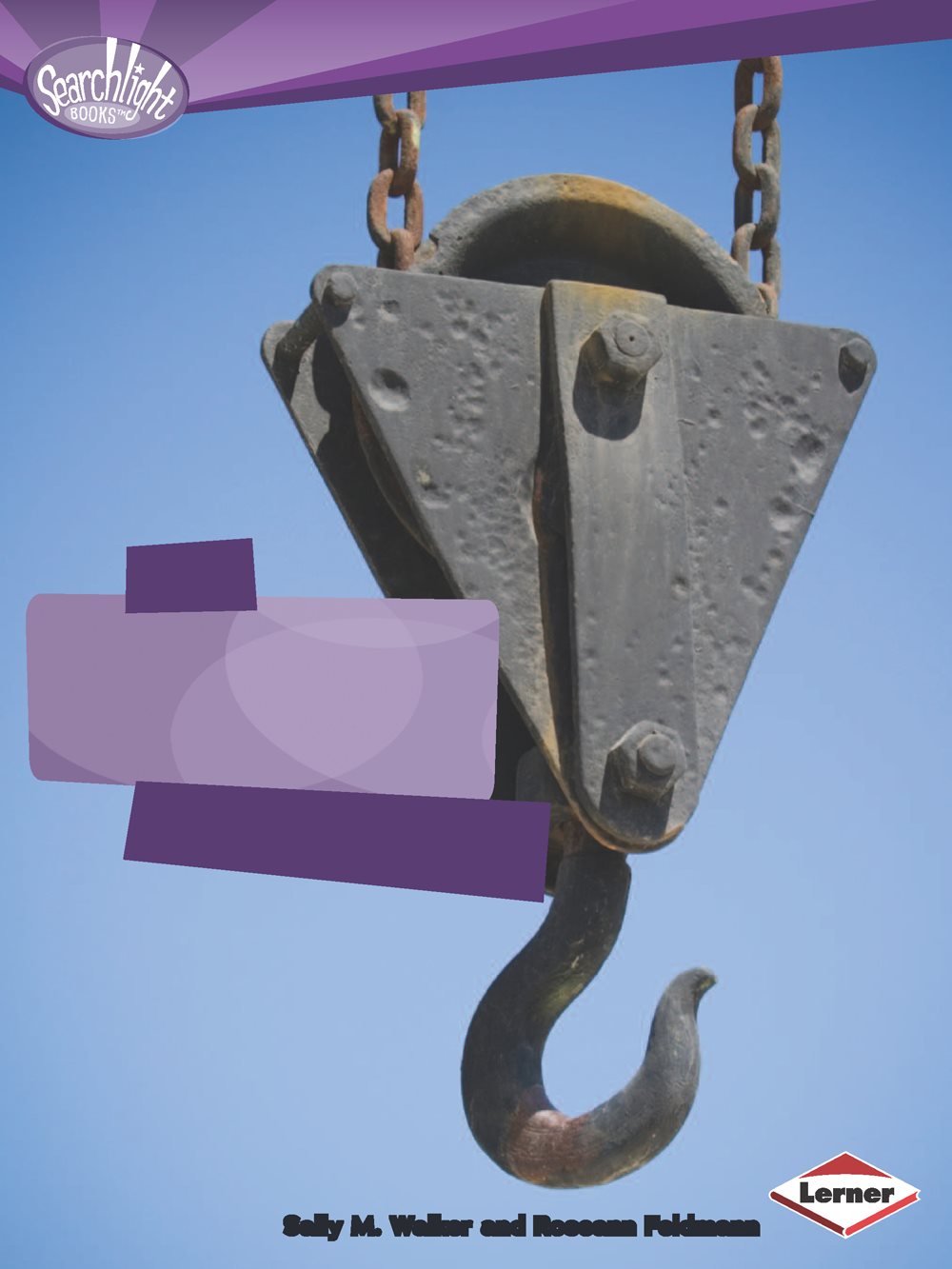Put
Pulleys
to the Test
Sally M. Walker and Roseann Feldmann
For my daughter, Chrissie.
Love you forever RF
Copyright 2012 by Sally M. Walker and Roseann Feldmann
All rights reserved. International copyright secured. No part of this book may be
reproduced, stored in a retrieval system, or transmitted in any form or by any means
electronic, mechanical, photocopying, recording, or otherwisewithout the prior written
permission of Lerner Publishing Group, Inc., except for the inclusion of brief quotations in
an acknowledged review.
Lerner Publications Company
A division of Lerner Publishing Group, Inc.
241 First Avenue North
Minneapolis, MN 55401 U.S.A.
Website address: www.lernerbooks.com
Library of Congress Cataloging-in-Publication Data
Walker, Sally M.
Put pulleys to the test / by Sally M. Walker and Roseann Feldmann.
p. cm. (Searchlight booksHow do simple machines work?)
Includes index.
ISBN 9780761353225 (lib. bdg. : alk. paper)
1. PulleysJuvenile literature. 2. FrictionExperimentsJuvenile literature.
3. GravityExperimentsJuvenile literature. 4. Force and energyExperiments
Juvenile literature. I. Feldmann, Roseann. II. Title.
TJ1103.W352 2012
621.8dc22 2010035395
Manufactured in the United States of America
1 DP 7/15/11
Contents
Chapter
WORK
You work every day. When you
raise window blinds,
you are working.
Playing and eating
snacks are work too!
Eating fruit is work.
What does the word
work mean to a
scientist?
You work when you play cards!
Work = Using Force to Move an Object
When scientists use the word work, they dont mean the opposite of play. Work is using a force to move an object. Force is a push or a pull. You use force to play, to eat, and to do chores.
This mother is pushing her son from one place to another. She is doing work.
Every time your force moves an object, you have done work. It does not matter how far the object moves. If it moves, work has been done.
If the object has not moved, you have not done work. It does not matter how hard you tried.
This boy is pushing on a house as hard as he can.
But he cant move the house. So he is not doing work.
Chapter
MACHINES
Most people want their work to be easy. Machines are tools that make it easier to do work. Some machines make work go faster too.
Complicated Machines
Some machines have
many moving parts. These
machines are called complicated
machines. Cranes and cars are
complicated machines.
Cranes are machines
that have many moving
parts. What do we call
machines that have
many moving parts?
Simple Machines
Some machines have few moving parts.
These machines are called simple machines. Simple machines are found in every home, school, and playground. They are so simple that most people do not realize they are machines.
This girl is using a simple machine to open window blinds.
Chapter
GRAVITY
Simple machines
make your work
easier. Some simple
machines do this by
changing the direction
of your force. Pulling
upward is hard work.
Pulling downward is
much easier. It is easier
because gravity helps you.
Gravity is the force that pulls
everything toward Earth.
Lifting a heavy box
is hard work. Why is it easier to lower the box to the ground?
Some simple machines change an upward force into a downward force. These machines make your work much easier.
When you drop a book, gravity pulls it to the floor. The book stays there until a stronger force moves it.
Gravity is pulling this book toward the floor.
Try This!
Put a heavy book on the floor. Lift it onto a table. Lifting the book is hard work. You must use a lot of force. Your lifting force has to be stronger than the pull of gravity.
Put the book back on the floor. It is much easier to lower the book than to lift it. When you lower the book, gravity helps you.
Gravity makes lifting a heavy book hard work.
If your force is in the same direction as gravity, your work is easier. You can prove this.
YOU WILL NEED A SCREWDRIVER, AN EMPTY
POP-TOP CAN, SOME SMALL STONES OR
SAND, A BIG PAPER CLIP, AND A PIECE OF
STRING THAT IS FEET (1 METER) LONG.
What You Do
Bend the ring on the can until it sticks straight up. Fill the can with stones or sand. Hook the paper clip on the ring. Tie a loop
at one end of the string. The loop should be big enough to fit loosely around your hand.
Lift the ring on the can, but dont break it off. Then fill the can with stones or sand.
Hook the loop
of string onto the paper clip. Now put the can on the floor. Hold the string. Pull up on the string to lift the can onto the table. You must use a lot of force to lift the can. How much force must you use?
Hold the string, and lift the can onto the table.

